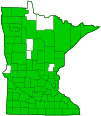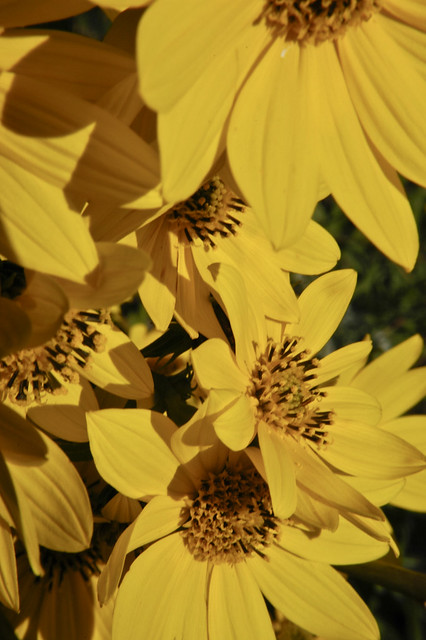sawtooth sunflower
(Helianthus grosseserratus)
Conservation • Wetland • Description • Habitat • Ecology • Use • Distribution • Taxonomy
Description |
||
Sawtooth sunflower is an erect perennial forb that rises on a single stem from a short creeping rhizome or sometimes a longer, thick, branched rhizome. It often forms dense colonies. It can be up to 120″ tall when appearing as a single plant, 24″ to 60″ tall when in a colony. The stems are erect, stout, round, and green, becoming purple in strong sun. They are sometimes covered with a whitish, waxy bloom (glaucous). They are hairless and usually unbranched below the inflorescence. Within the inflorescence the stems are sparsely to moderately covered with short, appressed, upward pointing hairs. There are usually 20 to 25 stem leaves. There are no basal leaves. Lower and middle stem leaves are usually alternate, sometimes opposite. Those near the top are always alternate. Lower stem leaves are narrowly lance-shaped to narrowly egg-shaped, 4″ to 12½″ long and 1½″ to 3½″ wide, 5 to 10 times as long as wide. They are often folded along the midrib, especially during hot and dry weather. They are on ¾″ to 2″ long leaf stalks. They are wedge-shaped at the base and taper to a sharp point at the tip. The upper surface is dark green and smooth or slightly rough and sparsely to moderately covered with minute hairs. The lower surface is densely covered with minute, soft, appressed hairs. The margins are coarsely or shallowly toothed. The leaves have a prominent midvein, and a pair of lateral veins that branch off the main vein well above the base and arch upward. The first pair of lateral veins is only slightly more prominent than subsequent pairs. The inflorescence is occasionally a solitary head, usually an open, branched cluster of 3 to 15 or more flower heads at the end of the stem. The flower heads are 2½″ to 4″ wide with disk up to ⅝″ wide. They are on stout stalks that are up to 4″ long. There is a whorl of 25 to 30 bracts (involucre) in 2 or 3 overlapping series at the base of the flower head. The involucre is broadly hemispheric in shape and ⅝″ to 1″ in diameter. The bracts are loosely spreading or sometimes ascending, and are spreading or bent backward at the tip. They are narrowly lance-shaped to nearly linear, and taper to a sharply-pointed tip. They are hairless or hairy toward the base, and have a fringe of hairs along the margin, at least near the base. There are 14 to 20 yellow ray florets and 100 or more yellow disk florets. The fruit is an achene. |
||
Height |
||
24″ to 120″ |
||
Flower Color |
||
Yellow ray florets, reddish-brown to purple disk florets |
||
Similar Species |
||
Rydberg’s sunflower (Helianthus nuttallii ssp. rydbergii) leaves are on shorter stalks, 3 ⁄16″ to ⅝″ long. The leaf blades are smaller, 1½″ to 8″ long and 5 ⁄16″ to 1½″ wide. The margins are untoothed or sparingly toothed. The inflorescence has fewer flower heads, no more than 6. The involucre has 30 to 38 bracts. The flower head has fewer disk florets, 60 or more. In Minnesota it is rare, currently verified in only one location. |
||
Habitat |
||
Dry. Prairies, bluff tops, railroads, roadsides, and open, disturbed areas. Full sun. Sandy soil. |
||
Ecology |
||
Flowering |
||
June to September |
||
Pests and Diseases |
||
Sunflower bullet gall midge (Pilodiplosis helianthibulla) makes ¼″ in diameter, almost globe-shaped galls on the leaves of plants in the genus Helianthus. |
||
Use |
||
|
||
Distribution |
||||
|
Sources |
|||
| 6/7/2023 | ||||
Nativity |
||||
Native |
||||
Occurrence |
||||
Common |
||||
Taxonomy |
|||
| Kingdom | Plantae (Plants) | ||
| Division | Tracheophyta (Vascular Plants) | ||
| Subdivision | Spermatophytina (Seed Plants) | ||
| Class | Magnoliopsida (Dicots) | ||
Order |
Asterales (Sunflowers, Bellflowers, Fanflowers, and Allies) | ||
Family |
Asteraceae (Sunflowers, Daisies, Asters, and Allies) | ||
| Subfamily | Asteroideae | ||
| Supertribe | Helianthodae | ||
| Tribe | Heliantheae (Sunflowers and Allies) | ||
| Subtribe | Helianthinae | ||
| Genus | Helianthus (sunflowers) | ||
Subordinate Taxa |
|||
|
|||
Synonyms |
|||
Helianthus grosseserratus var. hypoleucus Helianthus grosseserratus ssp. maximus Helianthus instabilis |
|||
Common Names |
|||
saw-tooth sunflower sawtooth sunflower thick-tooth sunflower |
|||
Glossary
Achene
A dry, one-chambered, single-seeded seed capsule, formed from a single carpel, with the seed attached to the membranous outer layer (wall) only by the seed stalk; the wall, formed entirely from the wall of the superior ovary, does not split open at maturity, but relies on decay or predation to release the contents.
Bract
Modified leaf at the base of a flower stalk, flower cluster, or inflorescence.
Glaucous
Pale green or bluish gray due to a whitish, powdery or waxy film, as on a plum or a grape.
Involucre
A whorl of bracts beneath or surrounding a flower, flower head, or flower cluster.
Rhizome
A horizontal, usually underground stem. It serves as a reproductive structure, producing roots below and shoots above at the nodes.
Visitor Photos |
|||||
Share your photo of this plant. |
|||||
| This button not working for you? Simply email us at info@MinnesotaSeasons.com. Attach one or more photos and, if you like, a caption. |
|||||
|
|||||
MinnesotaSeasons.com Photos |
|||||
Plant |
|||||
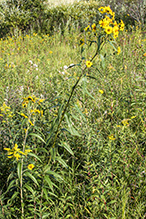 |
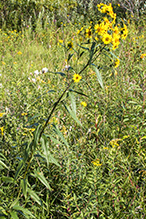 |
||||
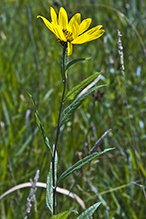 |
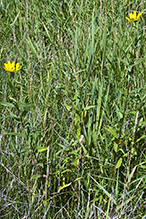 |
||||
Inflorescence |
|||||
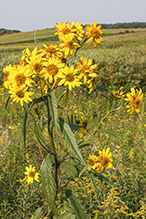 |
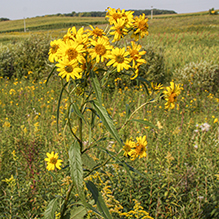 |
||||
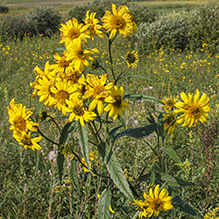 |
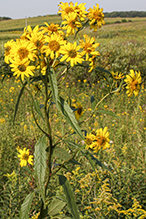 |
||||
Flower Head |
|||||
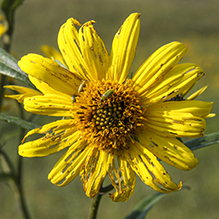 |
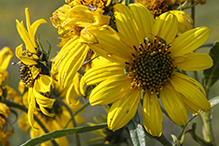 |
||||
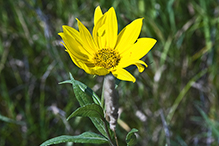 |
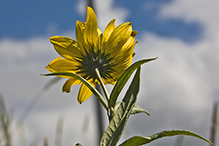 |
||||
Leaves |
|||||
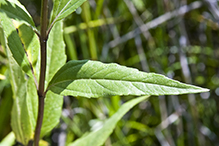 |
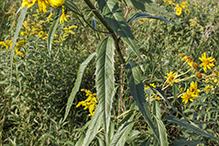 |
||||
Stem |
|||||
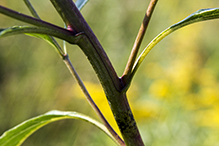 |
|||||

Visitor Videos |
|||
Share your video of this plant. |
|||
| This button not working for you? Simply email us at info@MinnesotaSeasons.com. Attach a video, a YouTube link, or a cloud storage link. |
|||
Other Videos |
|||

Visitor Sightings |
|||||
Report a sighting of this plant. |
|||||
| This button not working for you? Simply email us at info@MinnesotaSeasons.com. Be sure to include a location. |
|||||
|
|||||
MinnesotaSeasons.com Sightings |
|||||

|
Created: Last Updated: © MinnesotaSeasons.com. All rights reserved. |
